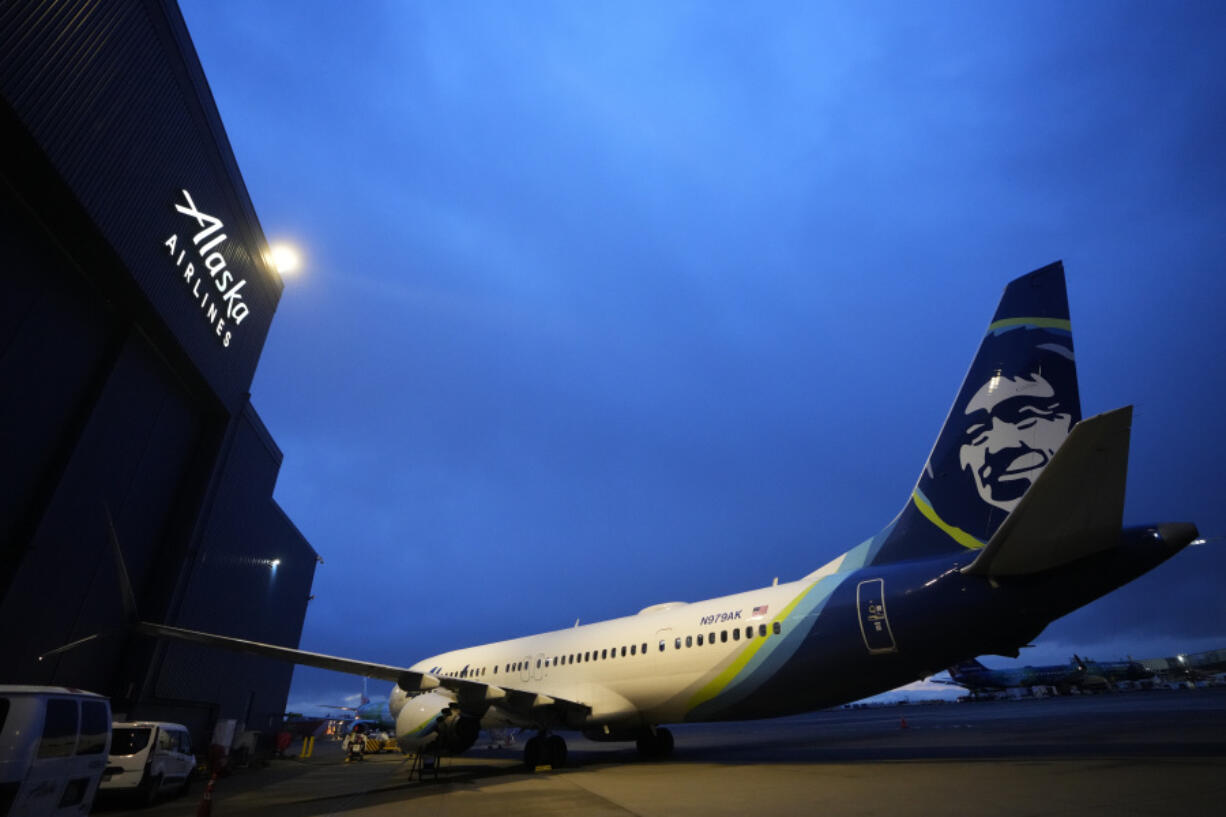Boeing narrowed its fourth-quarter loss to $30 million and increased production of its best-selling plane just before one of them suffered a blowout of a side panel during a flight, an accident that has raised new safety concerns about the aircraft manufacturer.
The loss reported Wednesday was smaller than Wall Street expected, and revenue beat forecasts.
However, the company declined to offer its own forecast of 2024 results — an indication of the uncertainty swirling around Boeing since a 737 Max 9 operated by Alaska Airlines suffered a midflight blowout of a panel called a door plug on Jan. 5.
“While we often use this time of year to share or update our financial and operational objectives, now is not the time for that,” CEO David Calhoun said, while promising that his focus is on improving quality after the Alaska Airlines accident.
Calhoun repeated a vow to help airline customers and “work transparently” with the Federal Aviation Administration, which is investigating quality-control issues at Boeing and its suppliers.
Over many years, Boeing sought to save money by shifting from manufacturing planes to assembling them largely from parts made by suppliers. On the 737, the most important supplier is Spirit AeroSystems, which makes fuselages and installs door plugs — although it is not clear whether Spirit or Boeing last worked on the doomed plug.
Calhoun said Boeing probably went too far in relying on suppliers but remains responsible.
“I want everybody — everybody on every airplane — to know that Boeing owns it. We own our supply chain. We own Spirit. We own the results of our work,” Calhoun said on CNBC.
The fourth-quarter results were an improvement from a loss of $663 million a year earlier. Boeing said that excluding one-time items, it lost 47 cents per share. Analysts surveyed by FactSet had expected an adjusted loss of 78 cents per share.
Revenue rose 10% to $22.02 billion, topping analysts’ prediction of $21.18 billion. Boeing said that at the end of last year, it hit its target of producing 38 737s a month.
Deliveries of new jetliners rose slightly, to 157 from 152 a year earlier, helping the Arlington, Virginia-headquartered company generate cash.
Boeing, however, again finds itself the focus of questions about the safety of its planes since a panel called a door plug blew off an Alaska Airlines Max 9 shortly after takeoff from Portland, Oregon.
The FAA grounded all Max 9s in the United States for nearly three weeks, forcing Alaska and United Airlines to cancel more than 1,000 flights between them. Alaska expects Boeing to cover an estimated $150 million in lost revenue and higher expenses from the grounding, and United has suggested it could drop plans to buy a future 737 model, the Max 10.
The FAA said last week that it won’t let Boeing expand Max production until safety concerns are resolved.
And this week, Boeing dropped a request for an exemption from a safety standard on another future model of 737s, the Max 7. The company wanted to deliver Max 7s to airlines before fixing a flaw in an anti-ice system, but some in Congress opposed the request.
“We believe this withdrawal reflects a ‘read the room’ moment by management in light of (Boeing’s) ongoing quality control problems,” CFRA Research analyst Stewart Glickman wrote in a note to clients. He said the company needs to focus solely on quality control for now, which likely will slow delivery of new planes in 2024.
Boeing shares have been on a roller-coaster ride. They fell 25% from late July to late October, then soared 47% by mid-December, only to fall 24% through Tuesday — most of that since the Max 9 incident.
The shares rose 5% in morning trading Wednesday.



